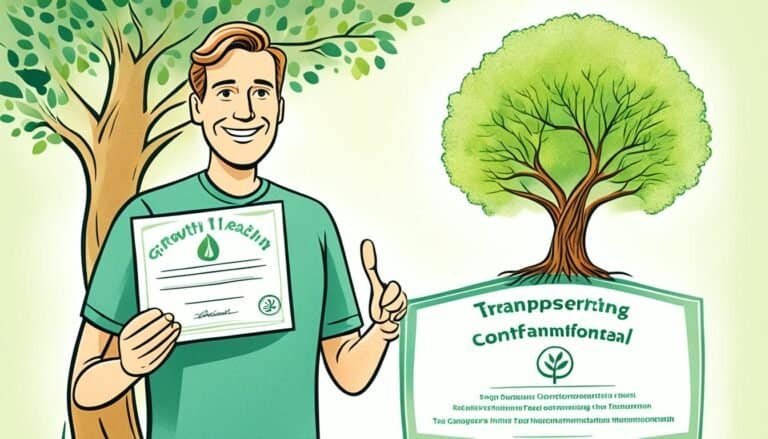What Are the Personality Traits of Highly Creative People?
Highly creative individuals are characterized by openness to new experiences, fueling exploration of unconventional ideas and activities. Curiosity and inquisitiveness drive constant questioning of norms and uncovering of hidden connections. Imagination and originality manifest in innovative problem-solving and creative brainstorming. Flexibility and adaptability enable quick problem-solving and openness to change. Passion and drive for creation push boundaries and inspire innovation. Emotional sensitivity and empathy bring depth and authenticity to their work. Playfulness and humor foster unconventional thinking and creative risk-taking. Embracing failure as a learning experience fuels groundbreaking ideas. These traits collectively shape a unique approach to creativity and problem-solving.
Key Takeaways
- Openness to new experiences and diverse perspectives.
- Curiosity, questioning norms, and seeking knowledge.
- Imagination, innovative thinking, and creative visualization.
- Flexibility, adaptability, and resilience in problem-solving.
- Passion for creation, pushing boundaries, and constant innovation.
Openness to New Experiences
Individuals with high levels of openness to new experiences exhibit a greater willingness to explore unfamiliar ideas and engage in unconventional activities, a trait often associated with creativity. This openness extends beyond the boundaries of the familiar, pushing individuals to seek out new environments and cultures through travel exploration. The act of traveling to different places not only exposes them to diverse perspectives and ways of life but also fuels their creativity by providing fresh inspiration and novel experiences.
Moreover, this inclination towards new experiences often manifests in artistic expression. Artists, writers, and creators who score high on openness tend to experiment with various forms of art, pushing the boundaries of traditional norms and techniques. This willingness to explore different artistic styles and mediums allows them to channel their unique perspective into their work, resulting in innovative and thought-provoking creations that captivate audiences.
In essence, the synergy between openness to new experiences, travel exploration, and artistic expression creates a fertile ground for creativity to flourish, enabling individuals to break free from conventional thinking and embrace the unknown with curiosity and enthusiasm.
Curiosity and Inquisitiveness
High levels of openness to new experiences often lead individuals to cultivate a sense of curiosity and inquisitiveness that propels their creative endeavors forward. This curiosity drives them to explore new ideas, concepts, and perspectives, seeking to understand the world in a deeper and more nuanced way.
Here are three key ways in which curiosity and inquisitiveness play an essential role in the creative process:
- Creative Exploration: Highly creative individuals are constantly exploring new avenues, pushing boundaries, and experimenting with novel concepts. This spirit of exploration allows them to discover unique solutions and approaches that others might overlook.
- Intellectual Curiosity: Creative people have a deep-seated intellectual curiosity that drives them to question the status quo, challenge existing norms, and investigate complex problems. This thirst for knowledge fuels their continuous learning and growth.
- Questioning Norms, Seeking Knowledge: By questioning established norms and seeking knowledge beyond the surface level, creative individuals are able to uncover hidden connections, spark innovation, and generate groundbreaking ideas. Their inquisitiveness propels them towards unconventional paths and fresh perspectives.
Imagination and Originality
When it comes to creativity, your ability to think innovatively and approach problems with a unique perspective sets you apart.
Innovative thinking methods and unique problem-solving approaches are key characteristics that define your imaginative and original nature.
Embracing these traits allows you to navigate challenges in unconventional ways, leading to groundbreaking ideas and solutions.
Innovative Thinking Methods
In the domain of creative endeavors, the cultivation of innovative thinking methods, particularly through the exploration of imagination and originality, serves as a cornerstone for discovering new possibilities and pushing boundaries.
When it comes to fostering innovative thinking, consider the following insights:
- Creative Brainstorming: Engage in structured yet open-ended idea generation sessions to explore diverse perspectives and generate novel concepts.
- Experimental Techniques: Embrace a willingness to experiment, test unconventional approaches, and challenge traditional norms to spark fresh ideas and solutions.
- Imaginative Visualization: Harness the power of visualization techniques to mentally explore different scenarios, visualize outcomes, and stimulate creative thinking processes.
Unique Problem-Solving Approaches
For enhanced problem-solving capabilities rooted in imagination and originality, embracing unconventional approaches and exploring uncharted territories can lead to innovative solutions and breakthrough insights. Creative problem solving involves stepping outside traditional boundaries and venturing into unexplored paths. By adopting unique strategies, you can tackle challenges from new angles, sparking creativity and uncovering fresh perspectives. This approach encourages thinking outside the box, fostering originality and imagination in problem-solving processes. Embracing unconventional methods not only enhances your problem-solving skills but also cultivates a mindset open to experimentation and risk-taking. Through this mindset, you can discover unique solutions that may have been overlooked through conventional approaches.
| Unconventional Approaches | Benefits |
|---|---|
| Thinking Differently | New Perspectives |
| Exploring Uncharted Territories | Innovation |
| Embracing Creativity | Breakthrough Insights |
| Risk-Taking | Unique Solutions |
| Experimentation | Enhanced Problem-Solving |
Flexibility and Adaptability
Creative individuals like yourself excel in being open to change, effortlessly adapting to new circumstances.
Your quick problem-solving skills enable you to navigate challenges with ease, finding innovative solutions.
Embracing new ideas is second nature to you, fostering a dynamic and flexible approach to creativity.
Openness to Change
Being flexible and adaptable is a key trait associated with individuals who exhibit high levels of openness to change in their personalities. This willingness to experiment and adaptability to change is an essential aspect of highly creative individuals. Embracing uncertainty and maintaining flexibility in mindset allows creative people to navigate through the unknown and explore new possibilities with ease.
Here are three key elements that highlight the importance of openness to change in fostering creativity:
- Embracing Novelty: Creative individuals embrace new ideas, experiences, and challenges with enthusiasm, constantly seeking out fresh perspectives and approaches.
- Resilience in Transformation: They demonstrate resilience in the face of unexpected shifts, quickly adapting to new situations and leveraging change as an opportunity for growth.
- Innovative Problem-Solving: Openness to change enables them to approach problems from diverse angles, leading to innovative solutions and breakthrough ideas.
Quick Problem-Solving Skills
Demonstrating quick problem-solving skills requires a high level of flexibility and adaptability in managing through challenges efficiently and effectively. Creative techniques such as brainstorming, mind mapping, and lateral thinking can aid in generating innovative solutions.
Problem-solving strategies like breaking down complex issues into smaller parts, identifying patterns, and thinking outside the box are essential for addressing problems promptly. Highly creative individuals often excel in rapidly adapting to unexpected situations, adjusting their approaches as needed, and thinking on their feet to overcome obstacles.
Embracing New Ideas
Embracing new ideas requires a mindset of openness and adaptability, essential for fostering creativity and innovation. Here are three key aspects to keep in mind when it comes to embracing new ideas:
- Creative Brainstorming: Engaging in creative brainstorming sessions allows you to explore different perspectives and generate innovative solutions. By encouraging a free flow of ideas without judgment, you can uncover unique insights and possibilities.
- Embracing Uncertainty: Being comfortable with ambiguity and uncertainty is vital in the creative process. Embracing the unknown can lead to groundbreaking ideas and unexpected discoveries. It's important to welcome challenges and view them as opportunities for growth and creativity.
- Flexibility and Adaptability: Remaining flexible and adaptable enables you to pivot quickly, adjust your approach, and incorporate new information into your creative endeavors. Adapting to changing circumstances allows you to stay agile and responsive, leading to more innovative outcomes.
Passion and Drive for Creation
Driven by an insatiable thirst for creativity, individuals with a passion for creation exhibit an unwavering dedication to bringing their ideas to life. This deep-seated push pushes them to constantly engage in creative exploration, seeking new ways to express their thoughts and emotions.
Their artistic drive is fueled by a desire to innovate, experiment, and push the boundaries of traditional thinking. These individuals aren't content with the status quo; instead, they endeavor to challenge themselves and others by delving into uncharted territory.
Their passion for creation acts as a powerful motivator, propelling them forward even in the face of obstacles or criticism. Research indicates that this relentless pursuit of creative expression is a defining trait of highly creative individuals, setting them apart from the rest.
Emotional Sensitivity and Empathy
An essential aspect of creative individuals is their heightened emotional sensitivity and capacity for empathy, which greatly influences their artistic endeavors and interactions with the world around them. This empathetic creativity allows artists to deeply connect with their own emotions and the emotions of others, leading to profound and impactful works of art. Sensitivity in art plays a vital role in how creative individuals perceive the world and interpret their experiences, infusing their creations with rich layers of meaning and depth.
Key Points:
- Empathetic Creativity: Creative people often possess a strong ability to empathize with the feelings and experiences of others, allowing them to create art that resonates on a deeply emotional level.
- Sensitivity in Art: The heightened sensitivity of creative individuals enables them to notice subtle nuances in their surroundings, inspiring unique interpretations and unconventional approaches in their artistic pursuits.
- Emotional Depth: The emotional sensitivity of creative individuals grants them a profound understanding of human emotions, enriching their artwork with authenticity and relatability.
Playfulness and Sense of Humor
Creative individuals often exhibit a playful demeanor and a keen sense of humor that infuse their work with a unique charm and light-heartedness. Playful creativity allows them to approach tasks with a sense of curiosity and experimentation, enabling out-of-the-box thinking. Humorous innovation, on the other hand, helps them see connections and possibilities others might overlook, leading to fresh and unconventional ideas. This blend of playfulness and humor not only makes their creative process more enjoyable but also enhances the quality of their output.
| Playful Creativity | Humorous Innovation |
|---|---|
| Encourages exploration and risk-taking | Sparks unconventional thinking |
| Fosters a relaxed and open-minded mindset | Promotes creative problem-solving |
| Inspires a sense of joy and spontaneity | Encourages collaboration and positive team dynamics |
Risk-Taking and Embracing Failure
Taking calculated risks and embracing failure are integral components of the creative process, often leading to valuable insights and breakthroughs. Creative individuals possess a risk-taking mentality that propels them to explore uncharted territories, pushing the boundaries of what's known and accepted. Embracing failure isn't seen as a setback but as a stepping stone towards growth and innovation.
Here are three key aspects that highlight the importance of risk-taking and embracing failure in fostering creativity:
- Risk Taking Mentality: Highly creative individuals are willing to step out of their comfort zones and take risks that others may shy away from. This mindset allows them to discover new possibilities and solutions that can lead to groundbreaking ideas.
- Learning from Failure: Instead of viewing failure as a final outcome, creative individuals see it as a valuable learning experience. They analyze their setbacks, extract lessons from them, and use this knowledge to refine their approaches and improve their work.
- Creative Resilience: Creativity thrives on resilience. Embracing setbacks with resilience enables creative individuals to bounce back stronger, more determined, and with a fresh perspective, ultimately fueling their creative endeavors.
Conclusion
To sum up, highly creative individuals possess a plethora of personality traits that drive their innovative pursuits. Their openness to new experiences, curiosity, and imagination foster a fertile ground for original ideas to flourish.
Their flexibility and passion propel them to overcome obstacles and push boundaries. Their emotional sensitivity and playful nature infuse their creations with depth and humor.
Embracing risk and failure, they forge ahead fearlessly. Ultimately, it's their relentless drive and daring spirit that sets them apart.








